
Have you spent hours planting green beans around your other vegetables to “fix nitrogen” and then wondered why it never made a difference?
Same, girl. Same.
We’ve all been fed the same half-truths, myths, and legends about gardening, and the nitrogen-fixation capacity of beans is one of the biggies.
Like with most gardening myths, the truth is somewhat more complicated.
Do beans really fix nitrogen in the soil?
Nope. No, they don’t. Not really.
Plant Beans, They Said…It’ll Fix Nitrogen, They Said
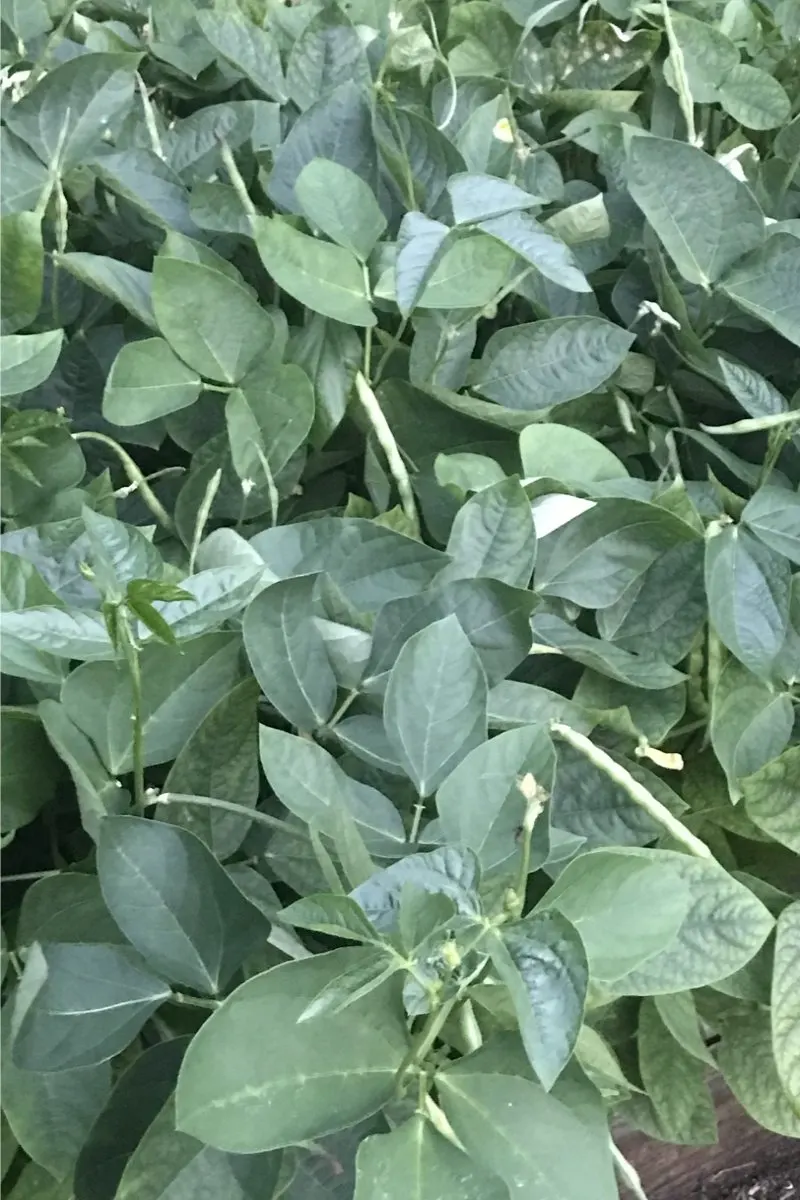
Nitrogen is critical for plant growth. It’s a key component of plant proteins and chlorophyll, and most of us spend way too much money buying more for our plants.
One of the most common gardening “hacks” you may hear is to plant beans with your other garden crops to add nitrogen to the soil.
You may have read that beans (legumes) have a mystical ability to capture nitrogen from the air and put it in the ground.
That’s only partially true.
You can’t just plant beans and get extra nitrogen for other plants in your garden.
There are two key secrets to using beans to fix nitrogen in the soil.
- You need to understand how they fix nitrogen, why they fix nitrogen, and when they fix nitrogen.
- And then you have to grow them at the right time in the right way to get any benefits.
Start with the Nitrogen Cycle
Approximately 80% of the earth’s atmosphere is made of nitrogen gas. But even beans can’t harvest it from thin air.
Legumes develop symbiotic relationships with specialized bacteria in the soil, known as Rhizobium bacteria.
These critters are what can collect nitrogen from the air.
These bacteria infiltrate small nodules on the roots of legumes. They can extract nitrogen gas from the air in the soil and convert it into ammonia (NH3), which then transforms into ammonium (NH4).
It’s ammonium that the plants can absorb and use for growth and development.
Nitrogen Cycle in a Nutshell
Here’s a quick breakdown of the process:
Nitrogen gas makes up a significant portion of the air we breathe. However, plants are unable to absorb it in its gaseous form.
These bacteria reside in the soil and the plant’s roots, and they convert atmospheric nitrogen into forms that plants can absorb.
Once nitrogen is converted into a usable form, plants can access it as a nutrient and use it for growth and development.
Eventually, the nitrogen returns to the atmosphere through various processes, completing the nitrogen cycle.
So, there are a few steps in there that may have been missed when sharing this popular gardening hack.
How Nitrogen Fixation Really Works
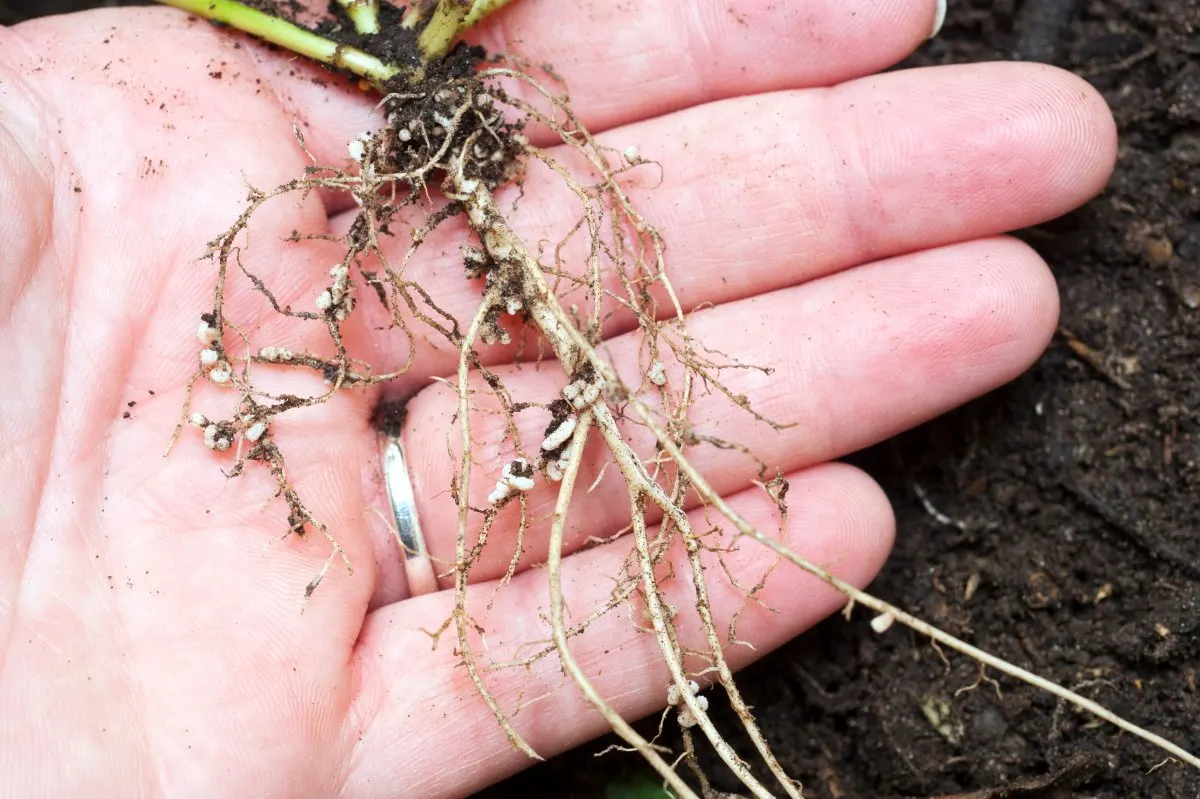
The hard workers behind nitrogen fixation are the Rhizobium bacteria. The ammonium they produce is the same form found in popular fertilizers.
So, while it sounds reasonable to plant beans to add more nitrogen to the soil, you need to ensure the process happens in the right order.
In a controlled environment — like your home garden — it’s pretty simple.
However, there’s more involved than just poking green bean seeds in the ground.
In this symbiotic relationship between beans and rhizobia, the plants provide carbohydrates to the bacteria.
During photosynthesis, the plants produce sugars, which they excrete into their root nodules where the rhizobia resides.
Yes, they are plying them with sweets to get nitrogen.
These sugars serve as a source of energy for the bacteria, enabling them to convert atmospheric nitrogen into a form that plants can utilize.
It’s a mutually beneficial relationship.
Another little-known secret is that not all beans are that great at fixing nitrogen, anyway. Garden bean varieties don’t provide all that much nitrogen, even when grown as a cover crop.
Cowpeas and fava beans provide five times the nitrogen as standard pole or bush beans.
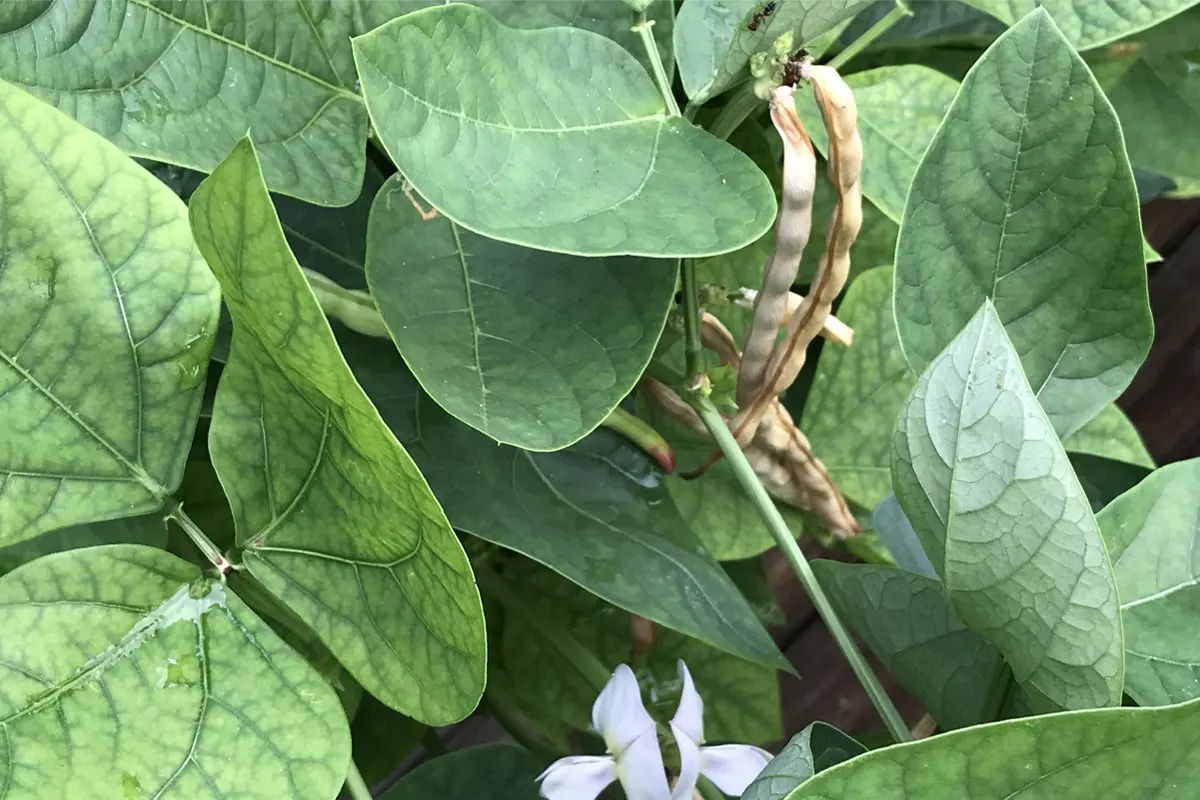
Why You Need to Know About Rhizobia
It’s not just another hard-to-pronounce Latin word — it’s the first step to unlocking nitrogen fixation in your garden soil.
Which then leads to saving lots of money on fertilizer.
Rhizobium bacteria are indispensable for nitrogen fixation in the soil. But they can’t fix nitrogen independently. They need a plant host to provide the necessary environment for that nitrogen fixation to occur.
Rhizobia to Know
Rhizobium bacteria are very diverse, with different species forming symbiotic relationships with various plant species.
If you want to save money on plant food and fix nitrogen in your soil with beans, you’ll need to make sure they’re inoculated with the right type of bacteria.
- Rhizobium leguminosarum: This species of Rhizobium forms symbiotic relationships with a wide range of leguminous plants, including peas, beans, lentils, and chickpeas.
- Rhizobium japonicum: This species of Rhizobium is well-known for its symbiotic relationship with soybean plants, or edamame.
- Rhizobium trifolii: Rhizobium trifolii forms symbiotic associations with plants in the clover family (Trifolium spp.), including white clover, red clover, and alfalfa.
- Rhizobium phaseolii: As the name suggests, Rhizobium phaseolii is associated with Phaseolus species, commonly known as garden beans, lima beans, runner beans, and other garden-grown varieties.
- Rhizobium etli: Rhizobium etli is carried on the seed of the Phaseolus genus, including common beans (Phaseolus vulgaris) such as kidney beans, pinto beans, and black beans, and works to fix nitrogen.
The First Key Step to Using Beans to Fix Nitrogen: Inoculation
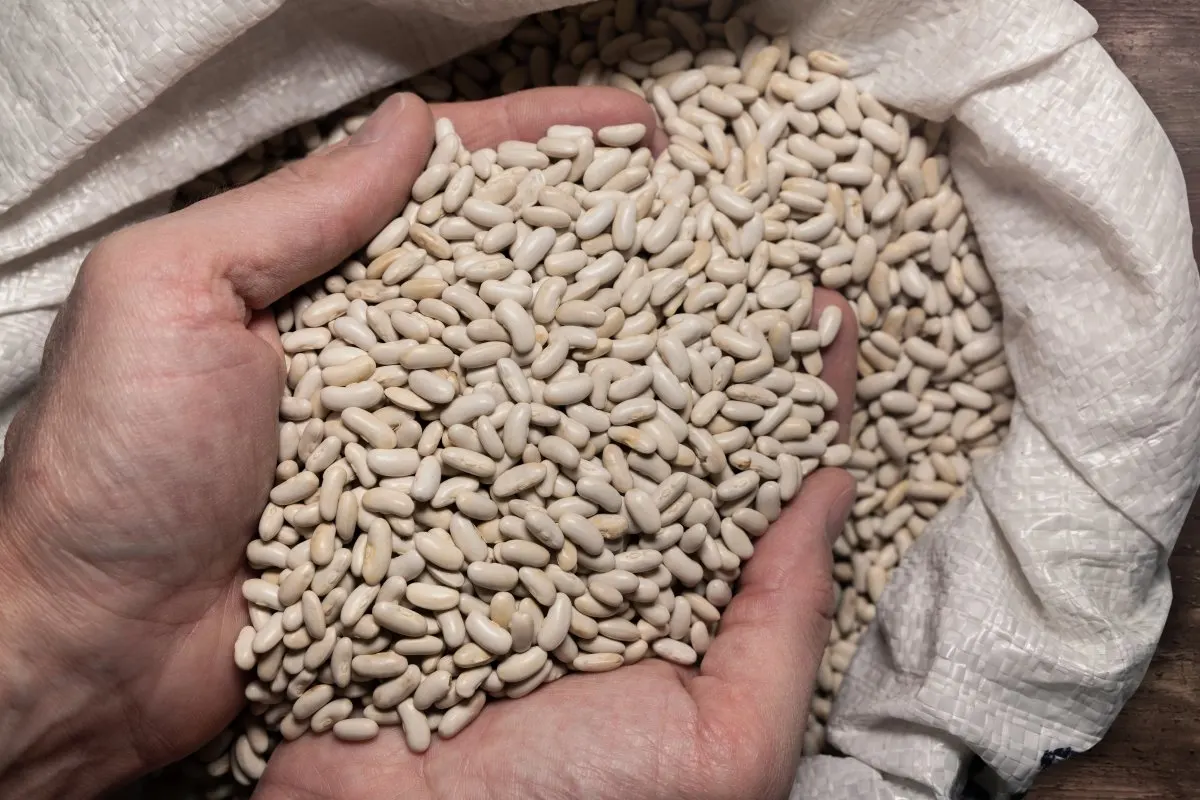
Rhizobium bacteria may hitch a ride on any legume seeds or may already be present in your garden soil.
However, to ensure nitrogen-fixing from bean crops to improve soil fertility, you’ll need to inoculate the seeds with the right strains of nitrogen-fixing bacteria.
The good news is that the inoculant is pretty cheap (especially compared to the rising cost of fertilizer).
The other good news is that it often will stay active in the soil under the right conditions. So, you may only need to buy it every couple of years.
Finally, most commercial varieties of pea and bean inoculants contain a mix of several types of Rhizobium bacteria. That means you won’t have to worry that you missed something important.
You can inoculate your seeds by coating them with the powdered product or by sprinkling some in the furrows where you’ll plant them.
The goal is to ensure close contact between the bacteria and the roots of the bean plants, so the bacteria can get established in the roots as soon as they sprout.
You Have Beans, You Have Bacteria, Now What?
Since nitrogen is a key component of the protein and chlorophyll plants need for growth and function, you may be wondering how this helps any other plant than the bean plants themselves.
Most of the nitrogen that bacteria feed to the bean plants goes to feed the plant and make more beans.
So, how does planting beans help provide fertility for the not-beans in your garden?
The Second Key Step to Using Beans to Fix Nitrogen: Termination
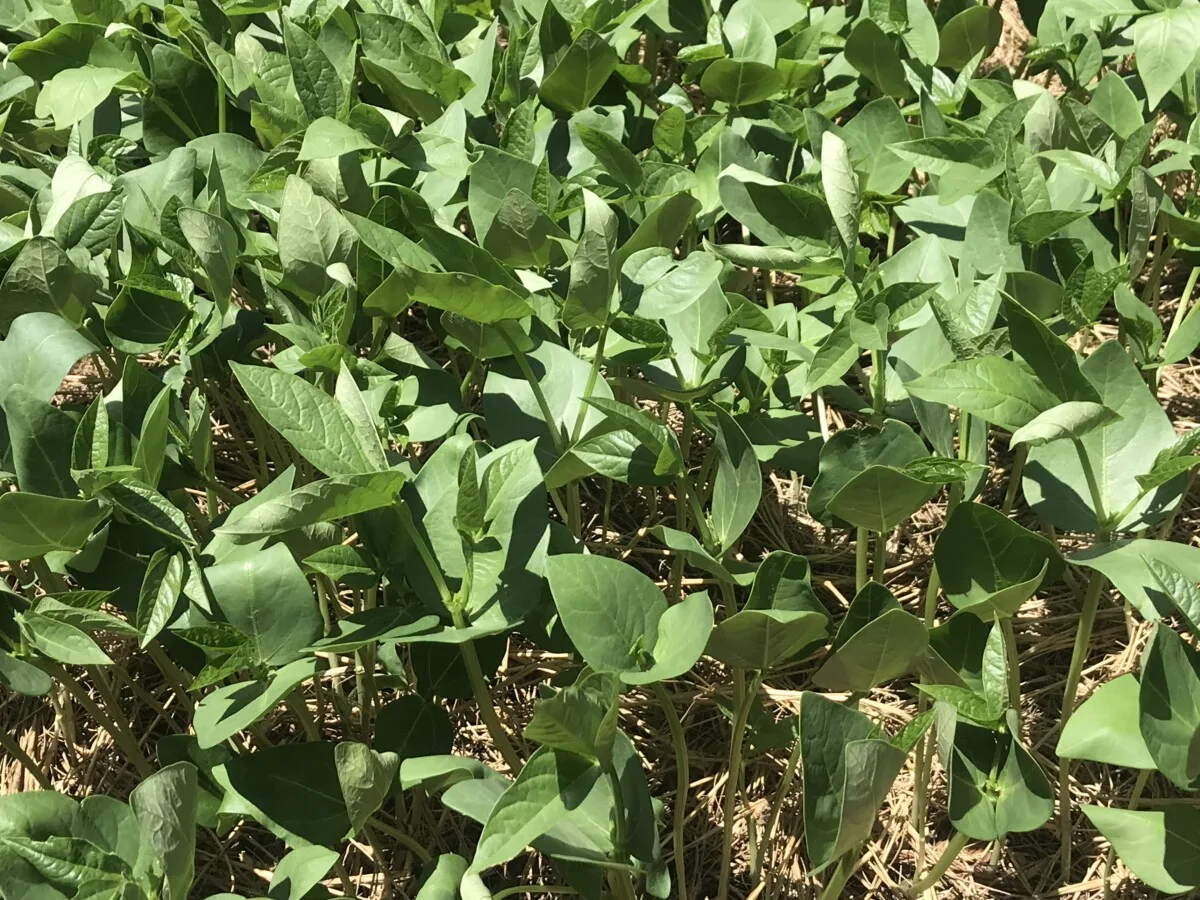
The nitrogen provided by the rhizobia becomes the vegetative growth of the bean plants. It is used in foliage, stems, roots, flowers and fruit.
You need to kill your bean plants so the nitrogen is released for other crops.
For best results, you’ll need to kill them before they make more beans.
You could choose to grow your beans, pick your beans, and then hope there is enough nitrogen left over for future plants.
Nitrogen remains in the root nodules of bean plants, even after harvest. As these nodules decompose, they release nitrogen into the soil, providing usable nitrogen for future plants.
But whether you choose to terminate them early or terminate them after your harvest, you’ll still need to terminate them to release the nitrogen into the soil.
As you have probably figured out by now, you can’t grow beans alongside other crops and expect them to just hand over their nitrogen.
They’re not companion plants. They’re a cover crop.
At the end of the bean plant’s lifecycle, they provide nitrogen-rich biomass in the form of leaves, stems, and roots. You want them to return to the soil through natural decomposition.
This organic matter releases nitrogen back into the soil, replenishing nutrient levels, and supporting microbial activity.
This is the real secret of using beans to fix nitrogen.
So, When Do You Terminate Your Beans?
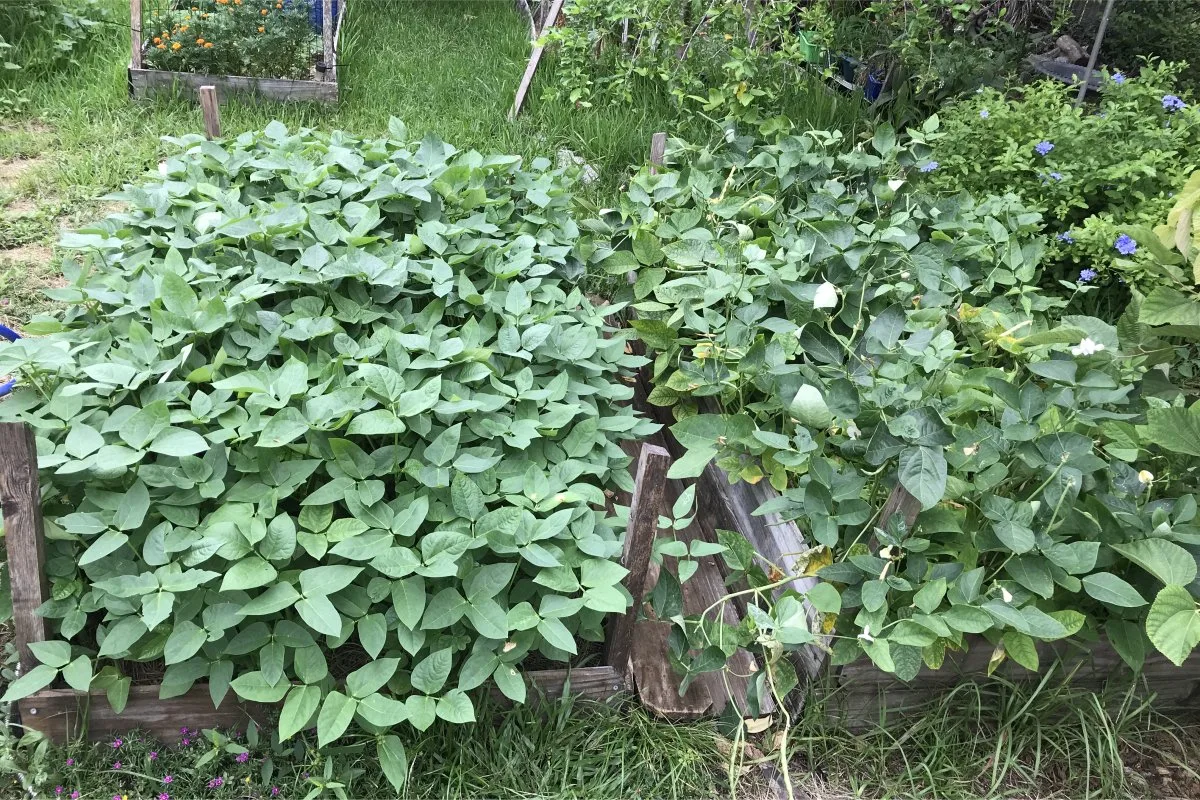
You can terminate legumes just as they begin to flower.
Plants use up a lot of stores to reproduce, including raiding the pantry contained in those root nodules.
So, it stands to reason that terminating them at full growth before they reproduce will provide the maximum amount of nitrogen.
How Do You Terminate Your Beans?
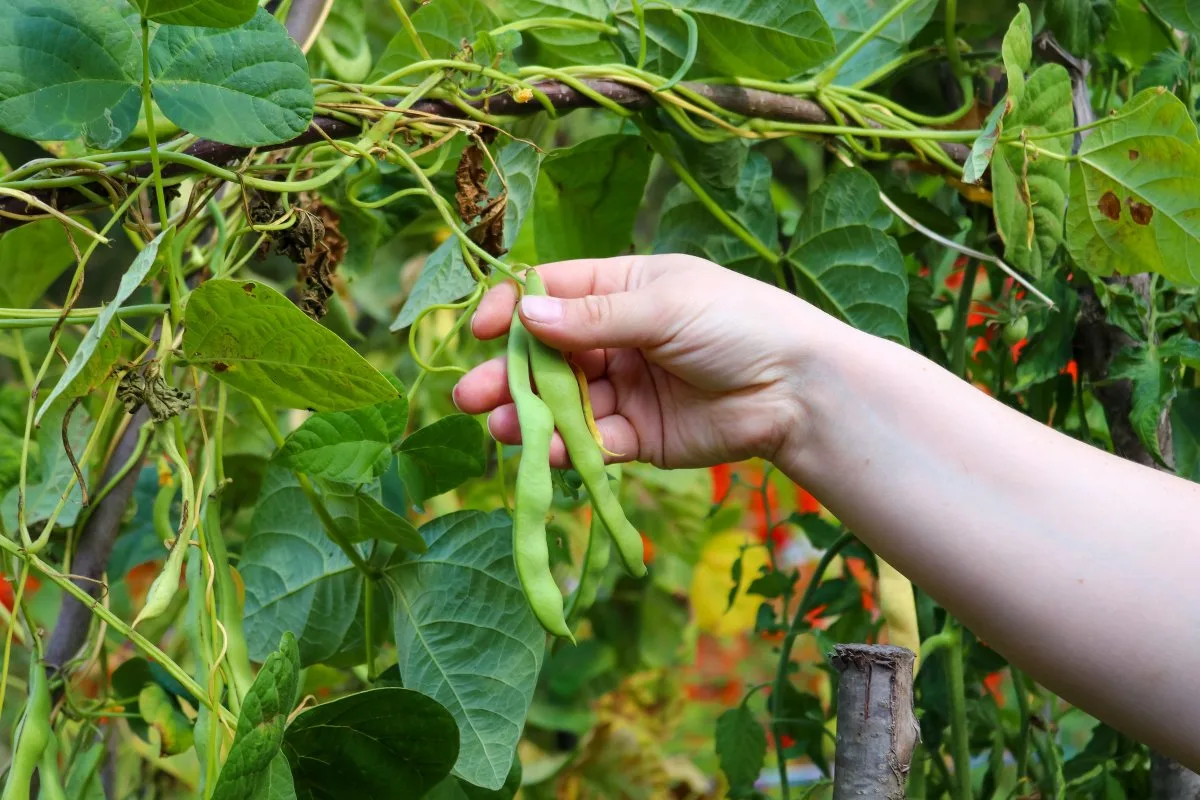
Farmers are increasingly using cover crops to reduce fertilizer costs and improve their soil quality. In general, large farms use mowing, flailing, or even glyphosate to kill their cover crops.
I personally don’t see the point of going through the effort of using beans to fix nitrogen and increase organic matter if you’re just going to dump poison in your fields.
But I get it. They’ve got big fields and time is money.
As home gardeners with much smaller plots, we can be more careful and terminate our cover crops more precisely.
For in-ground beds with no obstacles, you can just use a lawn mower with the catcher off. You can also use a string trimmer.
Note that if you want to preserve the mulch layer, you may need a more focused method.
For smaller beds or those with other plants nearby, you can use hedge clippers or grass shears.
I recently picked up a battery-powered trimmer for trimming around perennials. It’s perfect for cutting back spent annual crops and grass.
You can even use a pair of scissors for smaller garden beds.
Leave the Debris
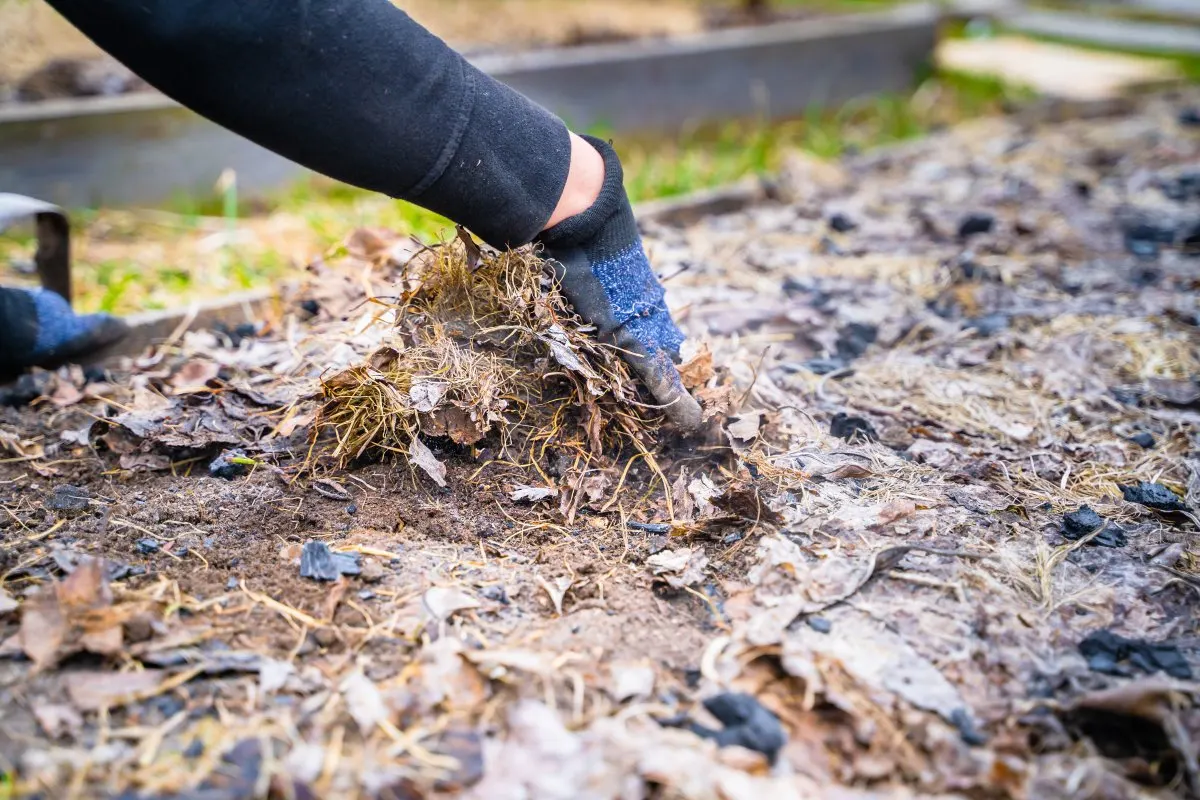
Once terminated, the root nodules will decompose and add nitrogen to the soil. The bean plants themselves offer nutrients and organic matter to the garden.
Spread the foliage from your terminated bean cover crop over the garden bed. Allow it to break down and feed the microbiology in the soil.
In the meantime, this layer of debris works as a mulch, helping to keep the soil at a cooler temperature and preventing evaporation from drying out the soil.
You can also till in the debris if you choose. However, I find the benefits of no-dig gardening and adding another layer of mulch far outweigh mixing it into the topsoil. The worms and grubs manage to work it in eventually, and it means I can use less hay when I mulch my next crop.
Speaking of which — once the bean crop is terminated, you can plant your new round of vegetable plants.
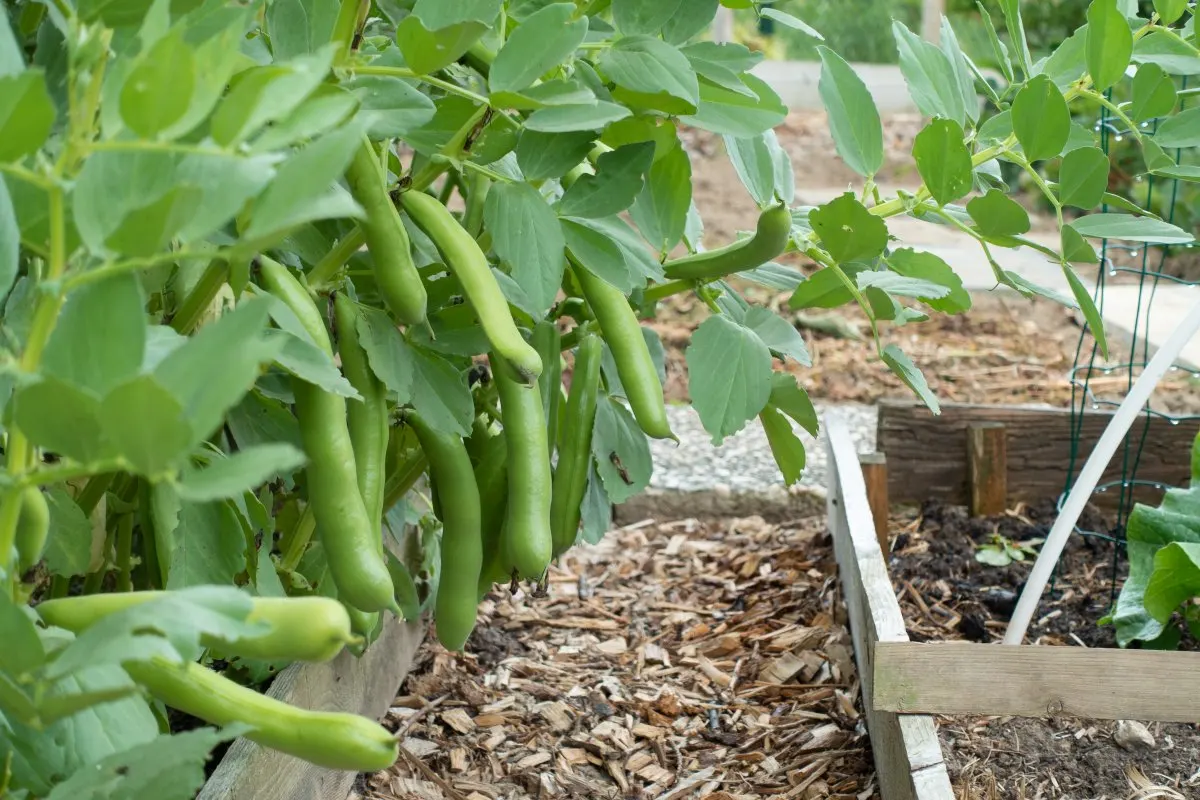
Other Nitrogen-Fixing Cover Crops
It may seem wasteful to plant beans and not get any beans out of it. However, other nitrogen-fixing cover crops will provide the same benefit.
There’s no reason to waste your favorite garden bean seeds (mine is Contender Bush, because of the pretty purple flowers).
Some cool-season legumes you can plant to add nitrogen include annual clover. During the summer, you can use sun hemp or alfalfa to improve your garden soil.
Keep the Soil Alive By Using Beans to Fix Nitrogen
If you still want to plant beans as a cover crop, there’s no reason to spend a lot of money on seeds.
I’ll tell you what I do. Summer is too hot here to grow much except okra and southern peas. So, I buy a big bag of black-eyed peas from the grocery store. They cost about $1 a pound.
There’s my cover crop.
Last year, I started two new beds for sauce tomatoes and planted them with a cover crop of black-eyed peas first.
I terminated one bed after cropping and one bed just as they started to flower.
While I got a great harvest from both beds, the ones I terminated at flowering produced healthier plants with much more fruit on them.
And since everyone in my family would rather have tomatoes to eat than black-eyed peas, no one mourned sacrificing them for better soil health.
Continuing Soil Health with Succession Sowing
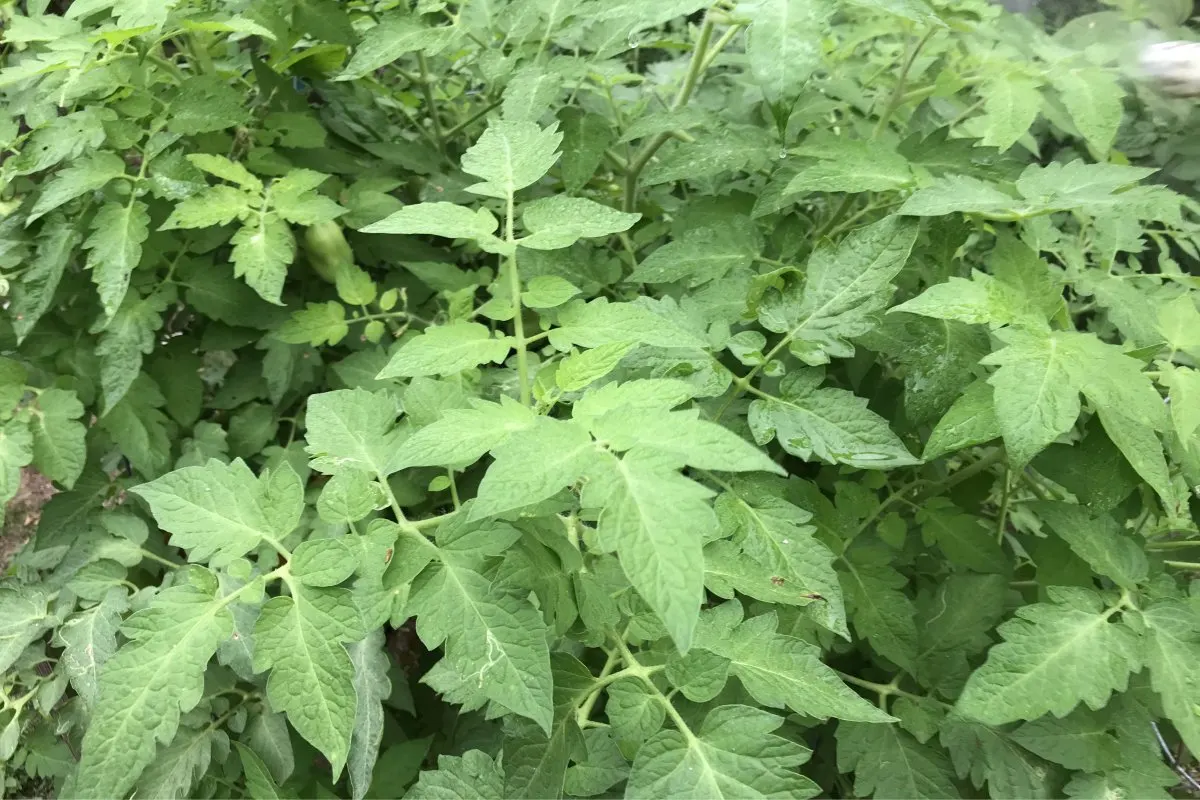
I’ve gotten into the habit of planting some inoculated green beans before planting nearly every crop.
As I clear one section of garden bed at the end of the growing season, I replace the plants with bush beans. These produce in about 50-60 days. Once they provide a flush or two of green beans, I cut them down and plant the next crop into the debris from the bean plants.
While it isn’t as effective as the cover cropping way of using beans to fix nitrogen, I get some beans and some nitrogen with each batch I plant.
It also provides somewhere for the Rhizobium bacteria to live throughout the year.
The Truth Behind Using Beans to Fix Nitrogen
There are many myths behind nitrogen fixation with legumes. But the two established facts are that 1) it only works if your soil has the right bacteria, and 2) it only works once the bean plants are done growing.
That doesn’t mean you can’t experiment with growing them to improve your soil health. You just can’t expect them to hand over the precious nitrogen that they need to grow.
Try growing them before other crops, and let the foliage decompose in the soil after picking your beans. Or grab an inexpensive bag of dried beans from the store to grow when your garden beds are fallow. It’s a cheap and easy way to inject some life into your soil.
FUN FACT: Nitrogen Fixation by Lightning
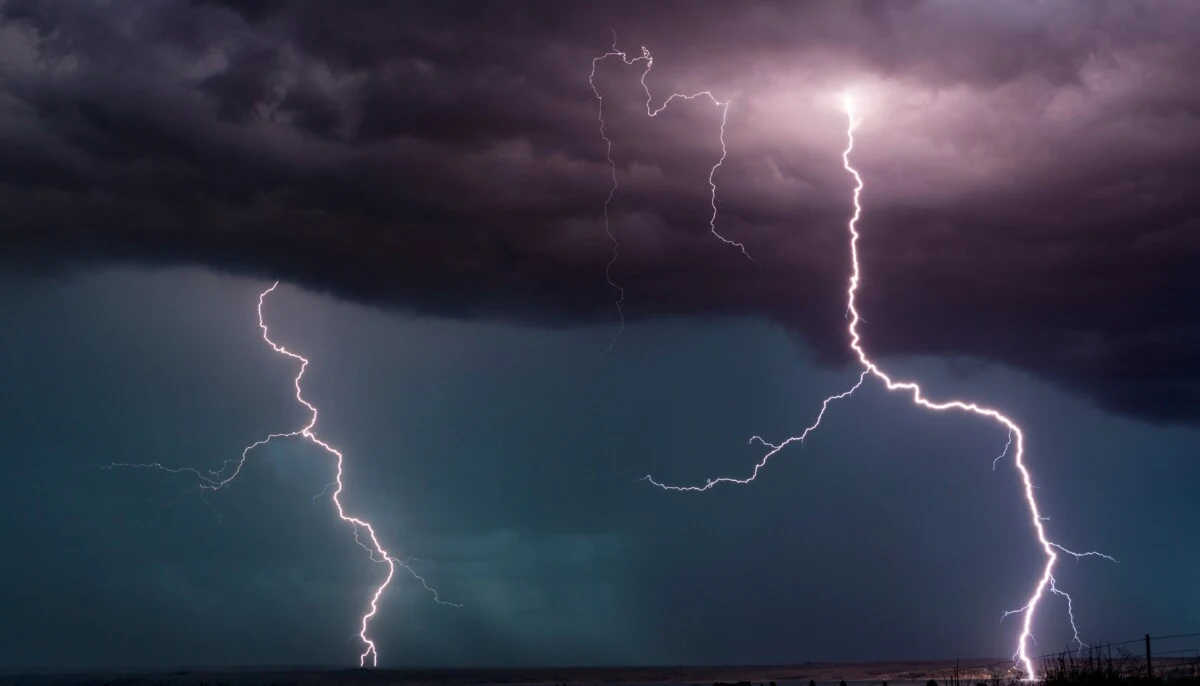
Did you know that lightning also plays a role in nitrogen fixation? It’s true!
Lightning packs a powerful punch during summer storms, breaking down and converting atmospheric nitrogen into a usable form for plants.
Here’s how it works: When lightning strikes, the intense energy and heat generated in the process cause nitrogen gas in the atmosphere to form nitrogen oxides.
These nitrogen oxides then dissolve in rainwater, forming nitrates and nitrites, which are forms of nitrogen that plants can absorb and use to grow.
So, next time you witness a lightning storm, remember that it’s not just watering your garden — it’s also fertilizing it.

Get the famous Rural Sprout newsletter delivered to your inbox.
Including Sunday musings from our editor, Tracey, as well as “What’s Up Wednesday” our roundup of what’s in season and new article updates and alerts.

